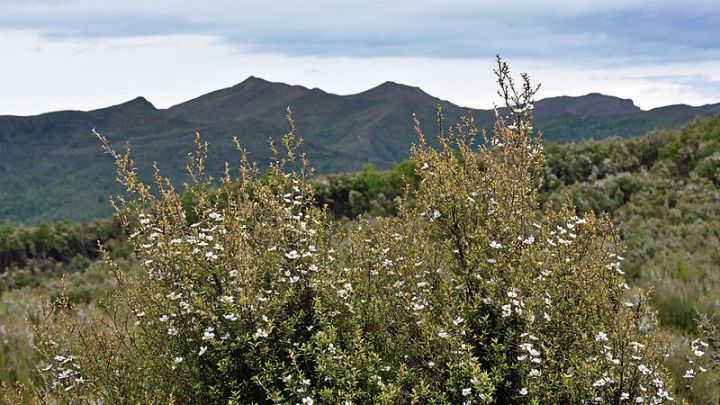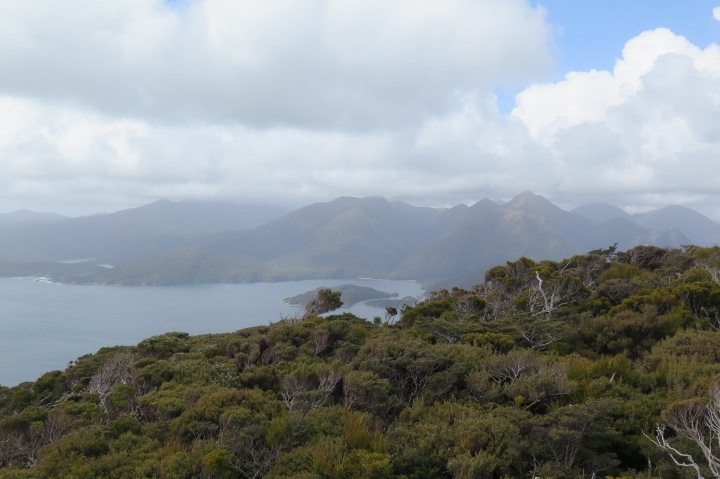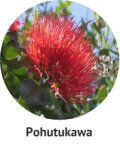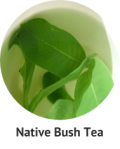Culture & History
Despite being perhaps one of the more important native plants in New Zealand, for most of the 20th century mānuka was viewed as a noxious weed. Farmers especially loathed the plant, viewing it as a costly nuisance that prevented them from developing areas of hill country. When a black sooty mould fungus caused widespread devastation of mānuka it was seen as a cause for celebration and infected trees could be purchased to help promote the spread of the fungus.

With greater research and understanding however, mānuka has had almost a complete reversal in its relationship with the New Zealand people. Because of its ability to cope with harsh environmental conditions, they are an ideal nursery crop providing shade and shelter to more sensitive natives. Eventually, mānuka nurtures this next generation of plants into a future forest. Because of this ability it has been widely adopted for use in all kinds of conservation projects; improving ecologically degraded areas and promoting natural regeneration.
Mānuka & Māori: A Special Relationship
It must be said that not all New Zealanders were so hostile towards the plant – Māori have had a long relationship with mānuka and have found a staggering amount of uses for it; from food, to medicine, to war and all manner of tools and artefacts. In fact, the relationship between Māori and mānuka is even more significant when examining the historical distribution of the plant.
Like many of its Australian counterparts, mānuka has a fire ecology; where its life cycle is adapted to the extreme conditions of forest fires. When the woody capsules that contain mānuka seeds are exposed to intense heat and smoke they spring open, scattering their contents on the recently cleared ground. But fires were fairly rare in pre-historic New Zealand, and mānuka was unable to persist for very long in an area before being replaced by other longer lived trees.
When Māori arrived in New Zealand, they cleared extensive areas of bush using fire. Not only did this provide mānuka the opportunity to increase its range, but it also meant that the New Zealand bush became more flammable as mānuka has adaptations to promote the spread of fire. Today, it occurs almost everywhere in New Zealand: from low country to the mountains, from wetlands to dry hills, and extends from Cape Reinga to Stewart Island/Rakiura.

Uses
On Captain Cook’s voyages of discovery around New Zealand, his crew boiled the leaves of mānuka to make tea. European settlers also adopted the practice, and the common name “Tea tree” is still used for mānuka and the similar-looking but genetically-distinct kānuka (Kunzea spp.). Cook also brewed a beer using mānuka and rimu leaves and found it: “exceedingly palatable and esteemed by every one on board.”
Today, sawdust from the wood is commonly used to impart flavour when smoking fish and meat. Honey made from the flowers is recognised as a valuable food and health item and is a popular overseas export, with studies now underway examining its medicinal and antibacterial properties. Essential oils from the leaves are also used commercially and form the basis of a variety of medicinal and cosmetic products.
Mānuka was also an important medicinal plant of the Māori. Infusions made with the leaves were used to reduce fevers, and treat stomach and urinary problems. Gum produced from the tree was used as a moisturizer for burns, and to ease coughing. Decoctions from the bark were used as a sedative, a mouthwash, and to treat diarrhoea and fever.
The wood of mānuka has been extensively used by New Zealanders as it is hard and straight-grained. It has been used to make a vast range of tools, implements and structures; such as beds, houses, combs, paddles, canoes and spears. It was also valued as firewood, as it has adaptations to promote fire. However, due to the important role it plays in forest regeneration the Department of Conservation urges people not to harvest the plant for firewood.

What does mānuka mean?
The word mānuka is a unique name in Aotearoa used to refer to Leptospermum scoparium and occassionally kānuka as well. Linguistically it is related to the Polynesian word nukanuka which in the Pacific describes the Fijian Christmas tree Decaspermum fruticosum.
Similar posts:










Manuka is fantastic- so many cool properties and uses! Do you know how to differentiate Manuka from Kanuka? (I’ve heard that one is larger than the other?)
LikeLike
The distinction can be pretty tricky sometimes.
Kanuka is the larger of the two, and can become a forest tree around 10 – 15m tall.
Manuka is generally a much smaller tree growing to around 5m.
Kanuka have small flowers that are grouped in clusters and small seed capsules.
Manuka have large single flowers and large seed capsules.
Another way to tell is to feel their leaves: Kanuka leaves are softer whereas Manuka leaves are prickly to the touch.
LikeLike
Thank you!
LikeLike
Hello, I was wondering about your exact question, too. The other day I bumped into this article (in German though), but google translate reveals some good information here related to KANUKA.
https://manukahonig.info/Wie-sind-Deine-K%C4%81nuka-Honig-Erfahrungen
LikeLike
Hey, We’ve been having a discussion on manuka honey and whereas the manuka tree grows in Australia too or not. One of our suppliers tells us that real manuka honey only comes from New Zealand, beacause the manouka tree does not grow in Australia. But during my research I find that the area where you can find the manuka tree spans to australia too. Can anyone give us a definitive answer
LikeLiked by 1 person
Kia ora Fenna,
The plant species Leptospermum scoparium (Known as Manuka) is indeed native to both New Zealand and parts of Australia.
There is still a bit of taxonomic work to do on this species to work out whether it is just one species, or should actually be multiple different species or varieties – but for now they are considered the same species.
I believe the tricky issue with Manuka Honey comes down to using the word “Manuka” as a brand name, as Manuka is a Maori word. There’s a very good write up on the history of the word Manuka and the use of “Manuka honey” trademarks by the linguist Richard Benton here: http://www.temarareo.org/TMR-Manuka.html
Hope this helps 🙂
LikeLike
I am from Holland and my friend’s eCommerce shop over the boarder in Germany has recently published a great blog article which some of you might be interested to read. https://tasteforyou.de/blog/unterschied-manuka-honig-kanuka-honig/ These guys are comparing MANUKA and KANUKA HONEYS. Article is in German, but I hope he’ll publish it in English soon too.
The demand has picked up dramatically for Kanuka Honeys in Europe! I’ve tried it, and it’s excellent.
LikeLike